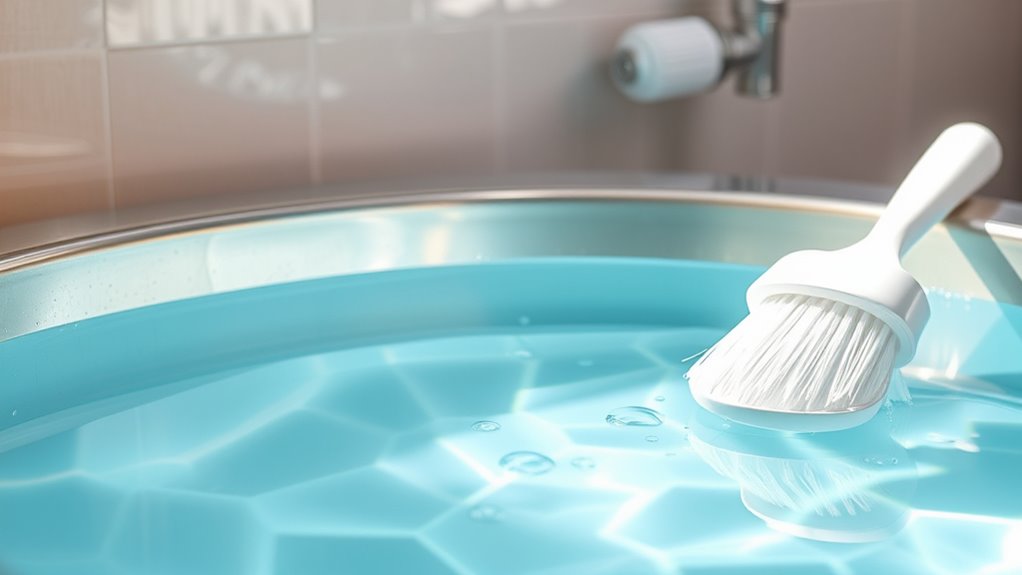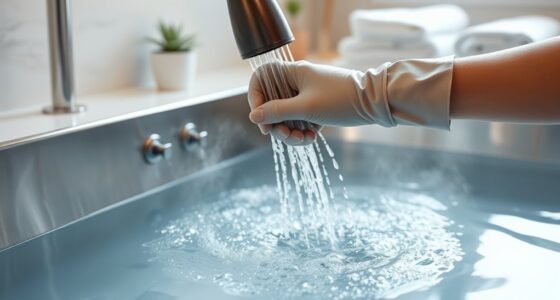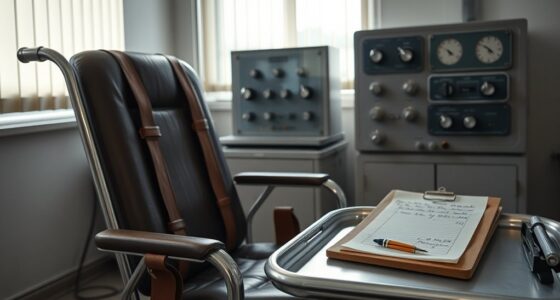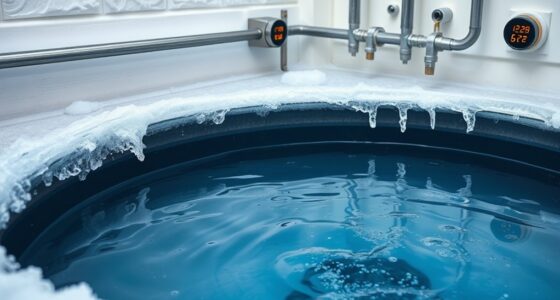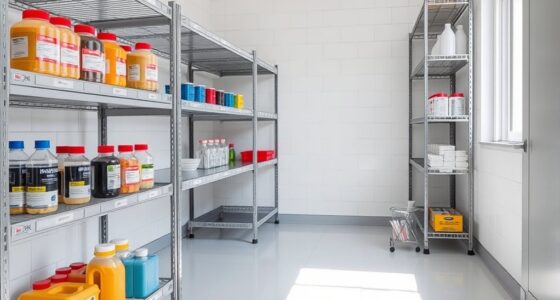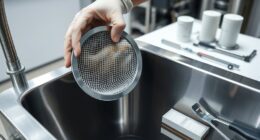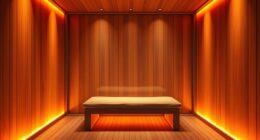To prevent limescale buildup on your cold plunge equipment, install water softeners or mineral filtration systems to reduce mineral content. Regularly maintain and replace filters or resin beads, and consider periodic descaling with appropriate cleaners. Combining water softening and filtration offers the best protection, helping your equipment stay efficient and damage-free. If you’re interested in more tips and effective strategies, keep exploring ways to keep your cold plunge in top condition.
Key Takeaways
- Install water softening systems to replace calcium and magnesium ions with sodium, reducing mineral deposits.
- Use mineral filtration media to trap minerals responsible for limescale before water reaches equipment.
- Perform regular maintenance, including filter and resin replacement, to ensure optimal water treatment effectiveness.
- Conduct periodic descaling with appropriate cleaning agents to remove existing limescale buildup.
- Combine softening and filtration methods for comprehensive protection against mineral deposits.

Limescale buildup can be a persistent problem in your home, especially if you live in an area with hard water. This mineral deposit forms when calcium and magnesium in the water crystallize and stick to surfaces, including your cold plunge equipment. Over time, these deposits can reduce efficiency, cause damage, and lead to costly repairs or replacements. To prevent this, focusing on water treatment methods like water softening and mineral filtration can make a significant difference.
Limescale causes damage; use water softening and mineral filtration to protect your cold plunge equipment.
Water softening is one of the most effective strategies for tackling limescale. It works by removing or replacing calcium and magnesium ions before they can cause deposits. You can install a water softener system at your main water supply or directly on your cold plunge setup, depending on your needs. These systems typically use ion exchange resins that swap calcium and magnesium for sodium ions, softening the water. This process not only reduces limescale but also improves water quality overall, making your equipment last longer and operate more efficiently.
In addition to water softening, mineral filtration offers another layer of protection. Mineral filtration systems are designed to target specific minerals responsible for limescale formation. Often, these filters contain activated carbon or specialized media that trap calcium, magnesium, and other impurities. When water passes through the filter, these minerals are reduced, resulting in water that’s gentler on your equipment. Installing a mineral filtration unit before your cold plunge can drastically cut down on mineral buildup, keeping the surfaces clean and preventing the formation of stubborn deposits.
Combining water softening with mineral filtration provides a thorough approach to preventing limescale. While softening reduces the total mineral content, filtration ensures that any residual minerals are captured before they settle on surfaces. Regular maintenance of these systems is essential; replace filters and resin beads as recommended to maintain their effectiveness. Also, consider periodic descaling of your equipment using appropriate cleaning agents, especially if you notice signs of mineral buildup despite treatment.
Ultimately, controlling the mineral content in your water makes a noticeable difference. By investing in water softening and mineral filtration solutions, you can safeguard your cold plunge equipment from limescale damage, extend its lifespan, and ensure it works smoothly. These proactive measures cost less than frequent repairs or replacements and help maintain a cleaner, more efficient setup. When you prioritize water treatment, you’re not just preventing limescale—you’re also enhancing the overall longevity and performance of your home’s aquatic amenities. Additionally, using water treatment methods that are compatible with your specific water chemistry can optimize results and further prevent mineral buildup.
Frequently Asked Questions
How Often Should Cold Plunge Equipment Be Checked for Limescale?
You should check your cold plunge equipment for limescale at least once a month. Following a consistent maintenance schedule ensures you catch buildup early. During each inspection, look for signs of limescale around the heating elements and pipes. Regular checks help prevent costly repairs and keep your equipment running smoothly. If you notice significant buildup, increase inspection frequency or consider additional treatment steps to maintain peak performance.
Can Limescale Buildup Affect the Cold Plunge’s Water Quality?
Imagine a spa that ignored scale prevention, leading to heavy limescale buildup. This buildup can indeed affect your cold plunge’s water quality by harboring bacteria and reducing filtration efficiency. Water hardness influences limescale formation, making it essential to monitor and manage. If ignored, mineral deposits can compromise water clarity and safety, so regular maintenance and scale prevention are indispensable to keep your cold plunge clean and safe for users.
Are There Specific Water Treatments That Prevent Limescale Formation?
Yes, you can use water softening and pH balancing treatments to prevent limescale formation. Water softeners remove calcium and magnesium ions that cause scale, while pH balancing helps maintain ideal water chemistry, reducing mineral deposits. Regularly applying these treatments ensures your cold plunge equipment stays free of limescale, extending its lifespan and maintaining water quality. Always follow manufacturer instructions for the best results and safety.
What Are the Signs That Limescale Is Beginning to Form?
Think of your equipment as a mirror reflecting water’s journey. If you notice a rough, chalky film or a dull sheen, it’s like mineral deposits beginning to settle, signaling scale accumulation. You might see small white spots or a haze forming on surfaces. These signs show limescale is starting to build, and early action can stop mineral deposits from hardening further, keeping your cold plunge smooth and efficient.
Is Professional Servicing Needed to Prevent Limescale Buildup Effectively?
Yes, professional servicing is essential to prevent limescale buildup effectively. Regular maintenance scheduling guarantees systems stay clean, while skilled technicians can maximize chemical dosing tailored to your equipment. They’ll check for early signs of buildup, calibrate systems, and apply proper treatments. This proactive approach minimizes damage, extends equipment lifespan, and maintains ideal performance, saving you time and money in the long run.
Conclusion
By regularly cleaning and using a descaling solution, you can substantially reduce limescale buildup on your cold plunge equipment. Did you know that untreated limescale can decrease equipment efficiency by up to 20%? Staying proactive not only prolongs your equipment’s lifespan but also ensures peak performance. So, make descaling a routine part of your maintenance, and you’ll enjoy a smoother, more invigorating plunge every time. Keep limescale at bay and maximize your cold plunge experience.
